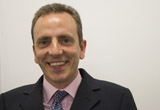 One of the latest thoughts to emanate from authorities in medical education is that investments in education will produce a tangible return on investment. The theory goes a bit like this: you invest in educational provision, healthcare professionals learn and put their learning into action, and this results in a return on investment. This return might be in the currency of clinical quality improvement or better still real currency (as a result of cost savings). Educationalists dismiss this pathway as too simple, too linear, and too much of a pathway—they think education is much more complex. They think that the addition of learner plus learning content can result in:
One of the latest thoughts to emanate from authorities in medical education is that investments in education will produce a tangible return on investment. The theory goes a bit like this: you invest in educational provision, healthcare professionals learn and put their learning into action, and this results in a return on investment. This return might be in the currency of clinical quality improvement or better still real currency (as a result of cost savings). Educationalists dismiss this pathway as too simple, too linear, and too much of a pathway—they think education is much more complex. They think that the addition of learner plus learning content can result in:
- no learning,
- some learning but no action,
- some learning and some action and,
- sometimes even some action and little learning.
The bystander to the debate throws up their hands and thinks of Oscar Wilde: “The whole theory of modern education is radically unsound. Fortunately, in England, at any rate, education produces no effect whatsoever.” (1) Who is right?
To get to the answer in a roundabout way, it’s worth looking at two recent movements in medicine—the movement for quality improvement and the movement for continuous professional development. Quality improvement has been around for some time and, while it’s tempting to delve deeply into the theory, in many ways quality improvement is a practical science. At its base it involves measuring the baseline quality of an activity, instituting quality improvement measures (be they educational or clinical measures or measures from improvement science), and then continually remeasuring and looking for improvement. Continuous professional development at its most effective involves doing a needs assessment (sometimes involving looking at the baseline quality of care), learning in order to satisfy any needs identified, and then following up and evaluating the effect of all this activity on clinical practice. It sounds familiar and even though quality improvement practitioners and medical educationalists use different words they are often describing the same thing. In many ways continuing professional development is a failure if it doesn’t result in quality improvement and quality improvement activities will similarly be a failure if they don’t result in some sustainable learning. Should we do more to integrate quality improvement and continuous professional development? Would this be a way of disproving Wilde’s aphorism and showing returns on education?
References:
1. Wilde O. The Importance of Being Earnest. 1895
Competing interests: Kieran Walsh works for BMJ Learning—the medical education division of the BMJ Group. He has written a book on cost and value in medical education published by Radcliffe.
Kieran Walsh is clinical director of BMJ Learning—the education service of the BMJ Group. He is responsible for the editorial direction of BMJ Online Learning, BMJ Masterclasses, and BMJ onExamination. He has written two books—the first on cost and value in medical education and the second a dictionary of medical education quotations. He has worked in the past as a hospital doctor – specialising in care of the elderly medicine and neurology.